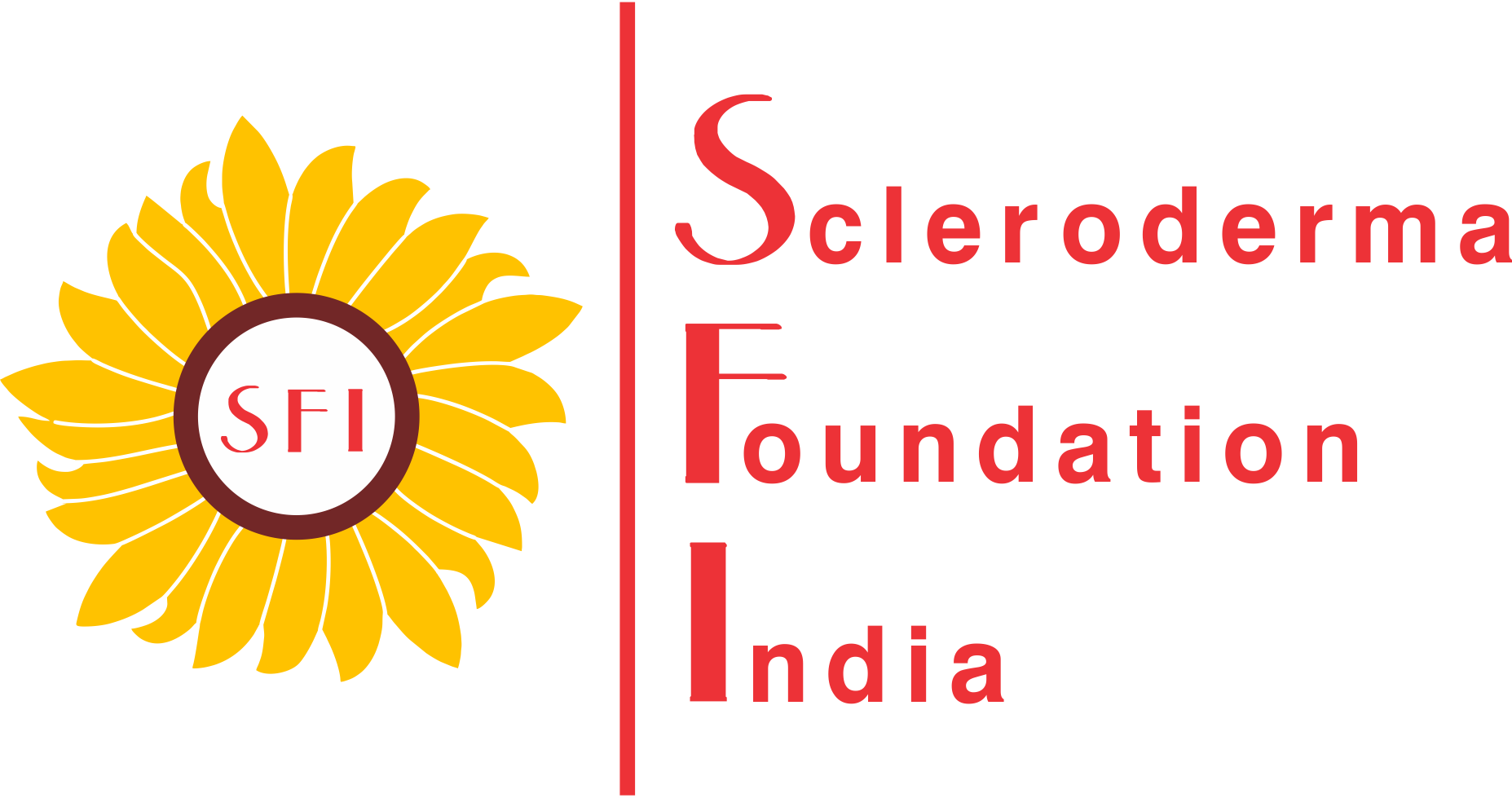Treatment
Currently, there is no cure for Scleroderma. Instead, treatment is directed at controlling and managing the symptoms. Because Scleroderma can have many symptoms, a combination of approaches is often needed to treat and manage the disease effectively.
- Skin Treatments : For Localized Scleroderma, topical medications often are beneficial. Moisturizers are used to prevent the skin from drying out, as well as to treat hardened skin. To improve blood flow so that sores in the fingers can heal, nitrates such as nitroglycerin are prescribed. Nitrates wok by relaxing the smooth muscles, causing the arteries to dilate (widen). Smooth muscles are those that generally form the support blood vessels and some internal organs. Nitrates can have side effects such as dizziness, nausea, rapid heartbeat and blurred vision, so it is important to discuss with your doctor whether or not they may be right for you.
- Digestive Remedies : Medications may be prescribed to help patients with heartburn and other digestive difficulties. These include antacids, proton pump inhibitors (PANTOCID, RABITROL and OMEZ) and H 2 receptor blockers (like Rantac ,Zintac , etc). Proton pump inhibitors work by preventing the proton or acid pump in the stomach from allowing stomach acid to be secreted. H 2 receptor blockers work by blocking histamine, a body chemical that promotes the production of acid in the stomach.
- Treatment of Lung Disease : For patients with Scleroderma who have rapidly worsening Pulmonary Fibrosis (scarring of the lung tissue), the drug Cyclophosphamide has been proven to be useful.
For Pulmonary Hypertension, the most successful treatment is continuous intravenous infusion of Epoprostenol , a prostaglandin, through a pump. Subcutaneous infusion of Treprostinil – a related prostaglandin – is an acceptable alternative. Prostaglandins are hormone-like substances found in the body that, among other things, help relax the smooth muscle, and hence dilate blood vessels. Other forms of therapy that are currently FDA approved for Pulmonary Hypertension include oral Bosentan , Sildenafil and inhaled Iloprost .
Lung transplant is a viable option for both severe (drug refractory) interstitial lung disease and pulmonary hypertension.
- Joint Difficulties : For patients with Scleroderma who experience joint problems, anti-inflammatory drugs may be prescribed. These drugs work by reducing inflammation and hence the pain and swelling. Physical therapy to prevent joints from contracting can sometimes be helpful.
- Raynaud's Phenomenon : Medications include vasodilators like calcium channel blockers , nitroglycerine patches/ointment, alpha blockers and sildenafil. Anti-platelet drugs such as aspirin are often added. For ischemic digital ulcers oral agents like sildenafil or preventive use of bosentan can be useful. For fingers with severe ulceration or impending gangrene, hospitalization for a trial of intravenous Epoprostenol or Alprostadil is appropriate. Infected ulcers need local wound care and a prolonged course of appropriate antibiotics.
- Sjögren's Syndrome : Although it cannot be cured, the symptoms can be relieved. Dry eyes can be treated with artificial teardrops, and cyclosporine eye drops. Dry mouth can be alleviated by sipping liquids or chewing gum. In more severe cases of dry mouth, drugs that stimulate the production of saliva may be prescribed.
- Kidney problems : Depending on the severity of the disease, kidney problems related to Scleroderma can be managed and treated using medications (especially Angiotensin Converting Enzyme (ACE) inhibitors) and Dialysis.
